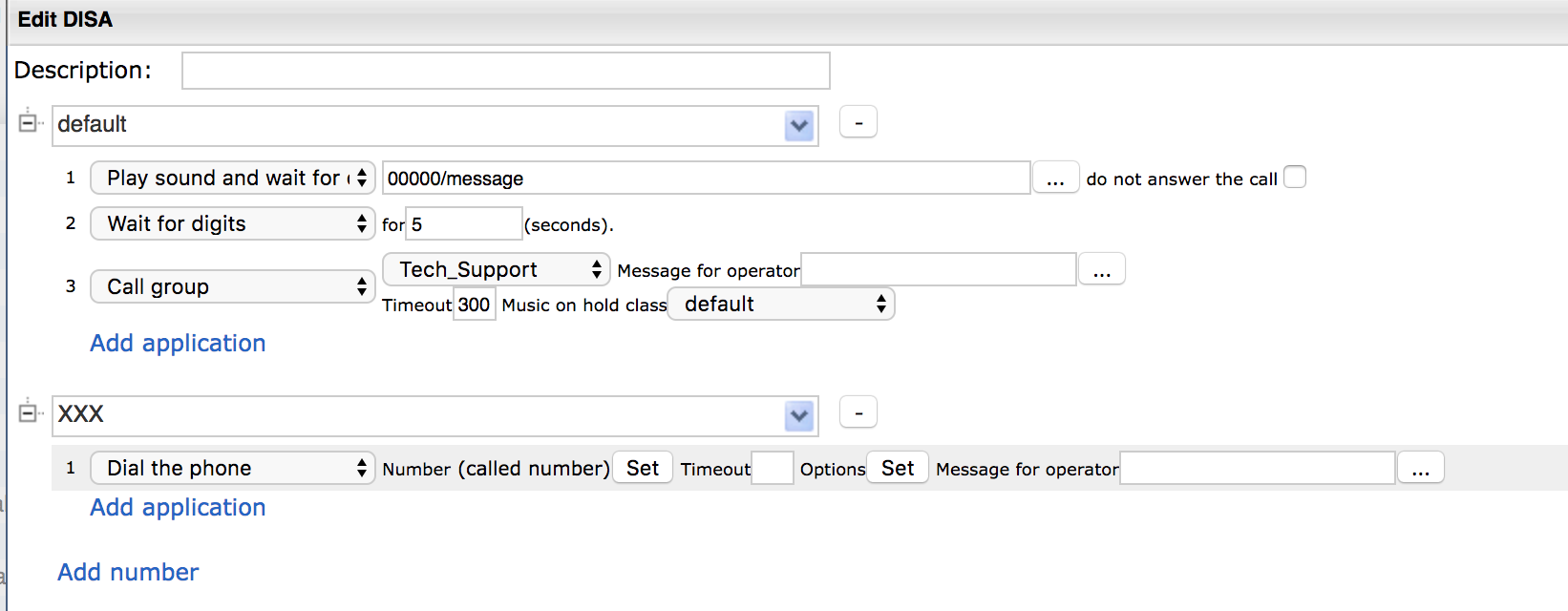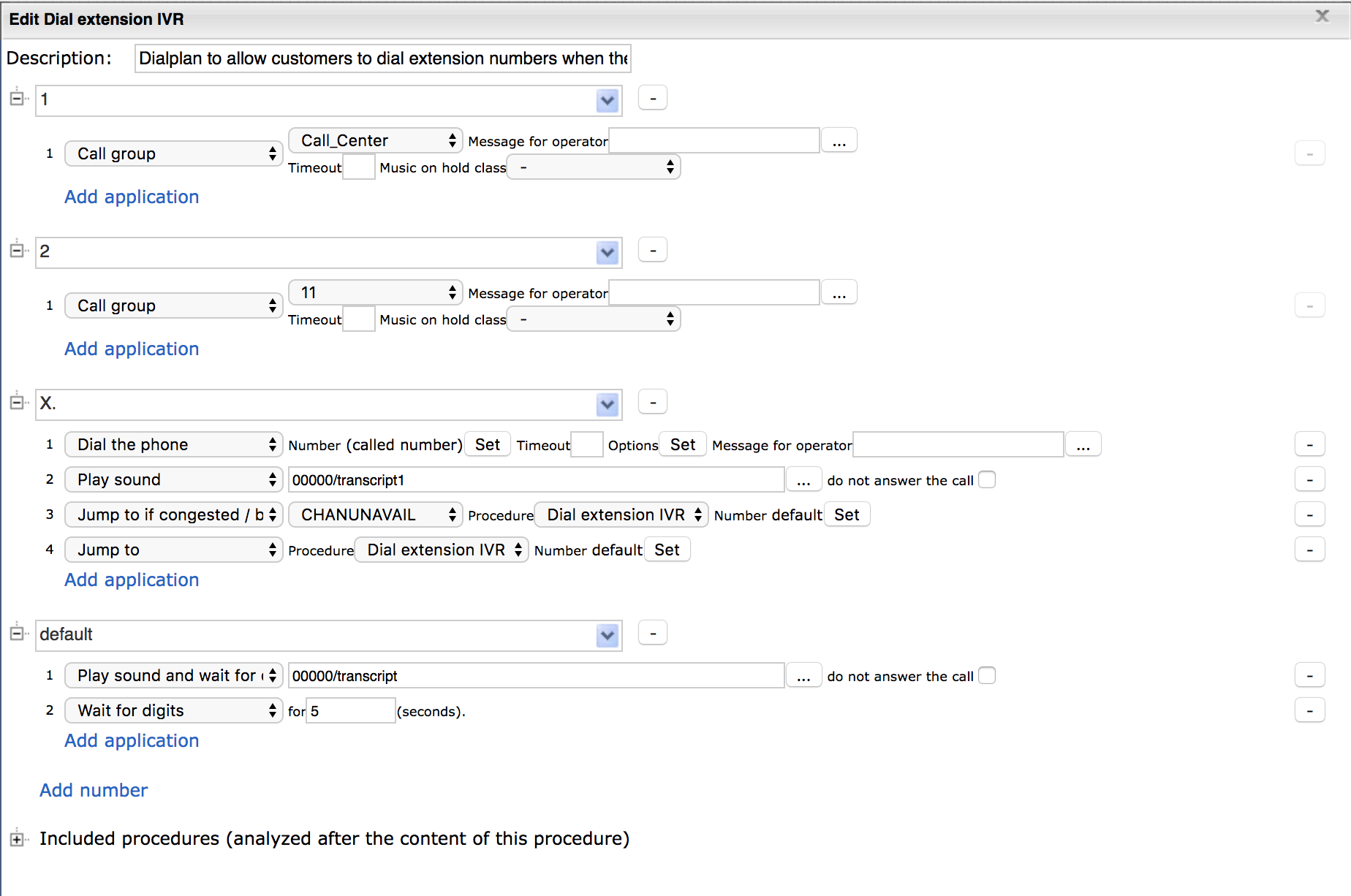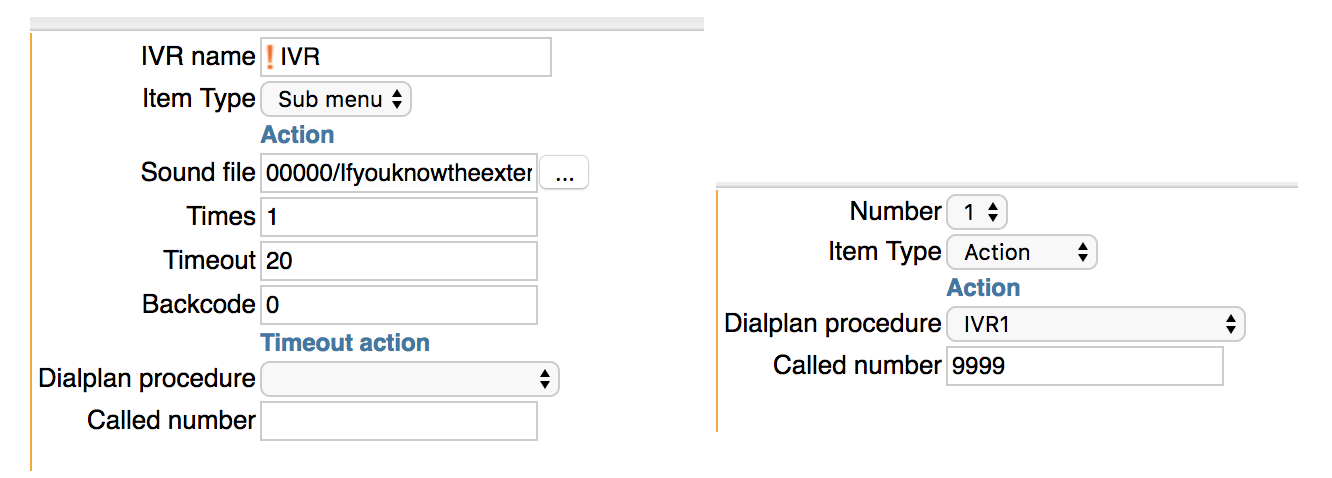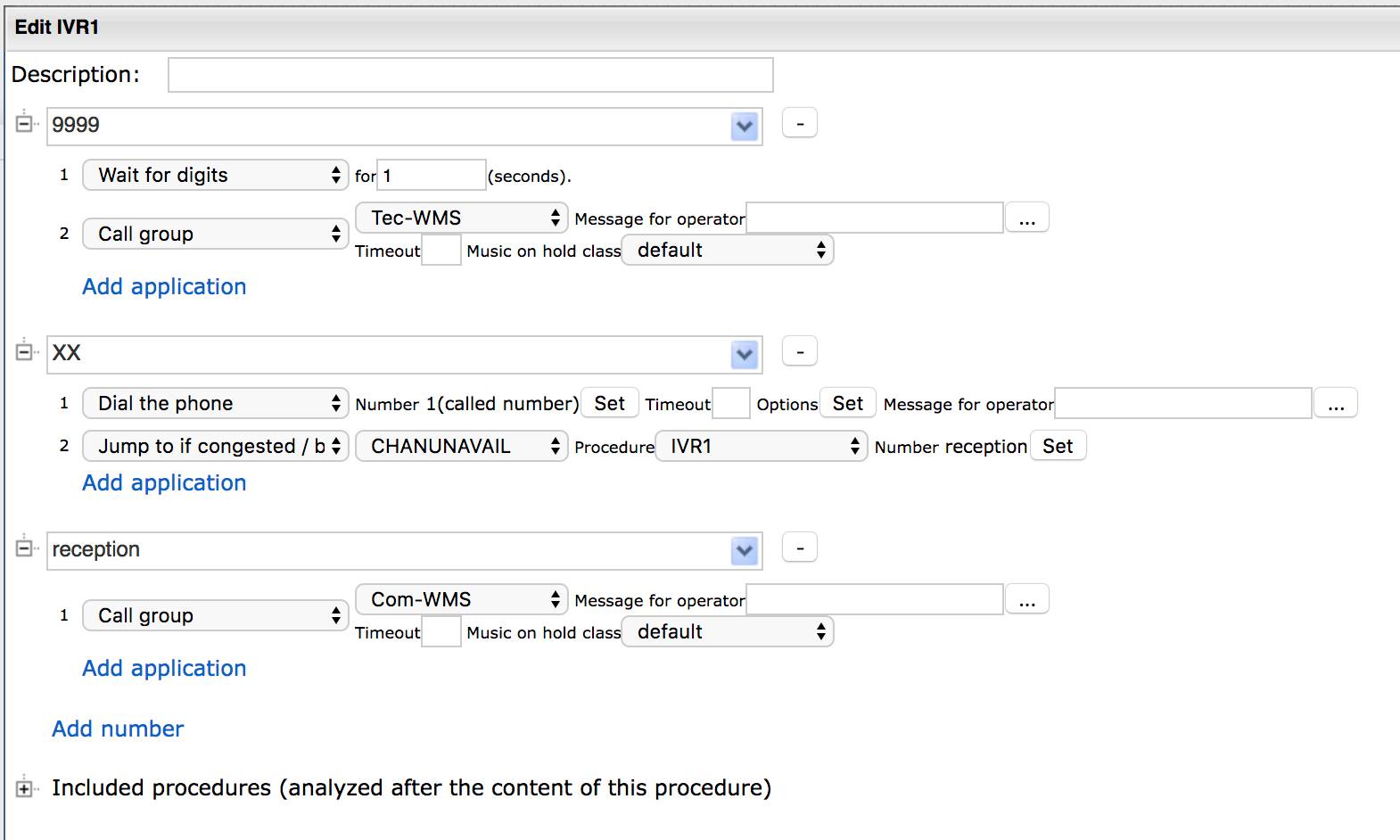This Article describes how to configure Dialplan procedure to allow customers to enter extension numbers when they are inside IVR. This functionality can be implemented via configuration of DID and DISA services. You can rather
The functionality can be implemented via several options:
- Configuring a separate Dialplan procedure (no need to use/ create an IVR tree in this case)
- Configuring an IVR tree and a dedicated Dialplan procedure
Created: October 2018
Permalink: https://confluence.wildix.com/x/qIHIAQ
Introduction
DID & DISA
DID and DISA services enable the caller to reach PBX users directly by dialing their extension numbers. They are configured in Dialplan procedure. Consult Dialplan applications Admin Guide for detailed information on each Dialplan application.
Example of DID (Direct Inward Dial) configuration:
First 8 digits are removed from the called number. Depending on the last two digits of the called number (1XX) incoming call is routed to the extension, examples:
Incoming call to 04611715111 is routed to extension 111
Incoming call to 04611715112 is routed to extension 112
Incoming call to 04611715122 is routed to extension 122
Example of DISA configuration:
Called number default:
- The message is played inviting the caller to enter the extension number
- The system waits for digits for 5 seconds
- In case of no input within the specified timeout, call is routed to call group
Called number XXX:
In case caller entered extension number, call is routed to the corresponding user
Basic Dialplan configuration
You can configure a basic IVR via Dialplan procedure (there is no need to create an IVR tree) and allow customers to enter extension numbers.
DISA configuration
- Go to WMS -> Dialplan and create a new Dialplan procedure
- Add the following Dialplan applications:
default - a called number to be dialed by a customer. Associate it with a Dialplan procedure used for receiving incoming calls
Play sound and wait for digits -> select an audio file/ generate it dynamically via TTS (consult Wildix Business Intelligence documentation), for example: "Press 1 for Sales, 2 for Support or enter the extension number you wish to call"
Wait for digits -> specify the timeout in seconds to give more time to the customer for entering the extension
1 - DTMF tone
- Call group -> select a call group for routing the call in case the customer presses 1
2 - DTMF tone
- Call group -> select a call group for routing the call in case the customer presses 2
X. - a called number to be matched with the dialed extension
- Dial the phone -> the application allows entering an extension number if the customer knows it
- Play sound -> this step is completed if the customer enters an invalid extension. Select an audio file/ generate it dynamically via TTS to announce the entered extension is invalid, for example: "The extension you entered is not valid"
- Jump to if congested/ busy -> in case the dialed extension number is not valid, the call is routed to default step of the current Dialplan procedure
- Jump to -> if the customer enters a valid extension, but a user is busy/ unavailable, the call is routed to default step of the current Dialplan procedure
IVR configuration
In case you already have an IVR tree (consult ) you can implement the functionality by creating a separate Dialplan procedure that manages call
DID configuration
You can use DID service to reach. For example, "If you know the extension number of a user, press 1".
After the customer presses 1, the call is routed to another Dialplan procedure, IVR1, with a called number 9999. The Dialplan procedure allows the customer to enter extension numbers.
- Go to WMS -> Dialplan and create a dedicated Dialplan procedure
- Add the following Dialplan applications:
9999 - a called number to route a call from the IVR tree to the current Dialplan procedure
- Wait for digits -> specify the timeout in seconds to give more time to the customer for entering the extension
- Call group -> in case the timeout is reached and no number is entered, the call is forwarded to a call group
Exit from the IVR to a dedicated dialplan, IVR1 in this case with match 9999 and wait for more digits (1 second is enough): if user digits 18 the good match XX will dial the phone 118 (1 of IVR and 18 of port selection), if user does not add any digit the call will go to the tech group
XX - a called number to match with a dialed extension
Dial the phone -> if a customer dials 12, the system matches with "1" is prepended to digits dialed by the customer.
Note: in case extension numbers start from "2". "3" and so on, you need to create exactly the same Dialplan procedures, but add "2", "3" etc. in "prepend digits" field.
- Jump to if congested/ busy -> this step is completed in case the dialed extension is invalid. The call is routed to reception step of the current Dialplan procedure
reception - specify the destination number to route the call in case the customer enters the invalid extension number
- Call group -> select a call group to which the call is routed in case the entered extension is not valid
DISA configuration
In case you have a wide range of extension numbers or don't want to create separate Dialplan procedures to match all the extension numbers, you can configure DISA which is quite similar to the previous DID configuration.
Add the following Dialplan applications:
444 - a called number to route a call from the IVR tree to the current Dialplan procedure
- Wait for digits -> specify the timeout in seconds to give more time to the customer for entering the extension
- Call group -> in case the timeout is reached and no number is entered, the call is forwarded to a call group
X. - a called number to be matched with the dialed extension
- Dial the phone -> the application allows entering an extension number if the customer knows it
- Jump to -> in case the dialed extension number is not valid, the call is routed to reception step of the current Dialplan procedure
reception - specify the destination number to route the call in case the customer enters the invalid extension number
- Play sound -> select an audio file/ generate it dynamically via TTS to announce the customer that the entered extension is invalid, for example: "The extension you entered is not valid"
- Call group -> select a call group to which the call is routed in case the entered extension is not valid





